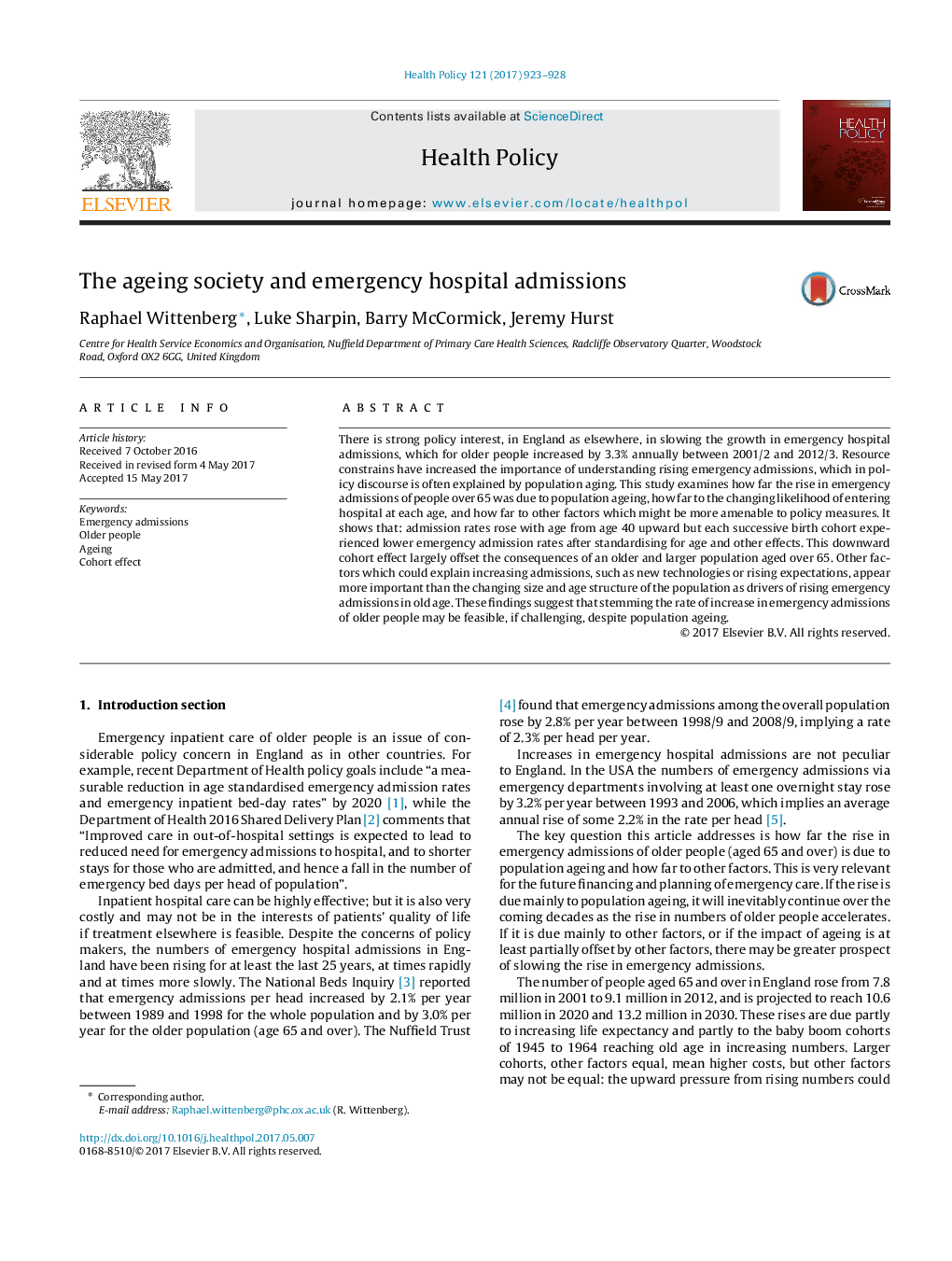| Article ID | Journal | Published Year | Pages | File Type |
|---|---|---|---|---|
| 5723416 | Health Policy | 2017 | 6 Pages |
â¢Emergency admissions of older people increased 3.3% annually between 2001/2 and 2012/3.â¢Emergency admission rates increased with age from age 40 Upward.â¢Successive cohorts experienced lower age-specific admission rates after standardising for other effects.â¢This downward cohort effect largely offset the consequences of population ageing.â¢Rising emergency admissions is due mainly to factors other than population ageing.
There is strong policy interest, in England as elsewhere, in slowing the growth in emergency hospital admissions, which for older people increased by 3.3% annually between 2001/2 and 2012/3. Resource constrains have increased the importance of understanding rising emergency admissions, which in policy discourse is often explained by population aging. This study examines how far the rise in emergency admissions of people over 65 was due to population ageing, how far to the changing likelihood of entering hospital at each age, and how far to other factors which might be more amenable to policy measures. It shows that: admission rates rose with age from age 40 upward but each successive birth cohort experienced lower emergency admission rates after standardising for age and other effects. This downward cohort effect largely offset the consequences of an older and larger population aged over 65. Other factors which could explain increasing admissions, such as new technologies or rising expectations, appear more important than the changing size and age structure of the population as drivers of rising emergency admissions in old age. These findings suggest that stemming the rate of increase in emergency admissions of older people may be feasible, if challenging, despite population ageing.
